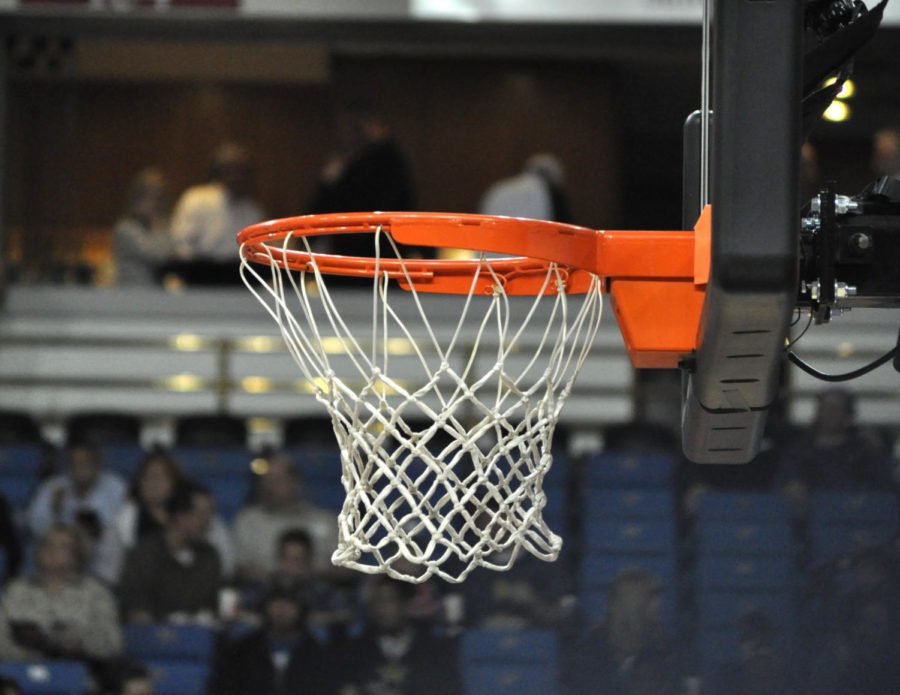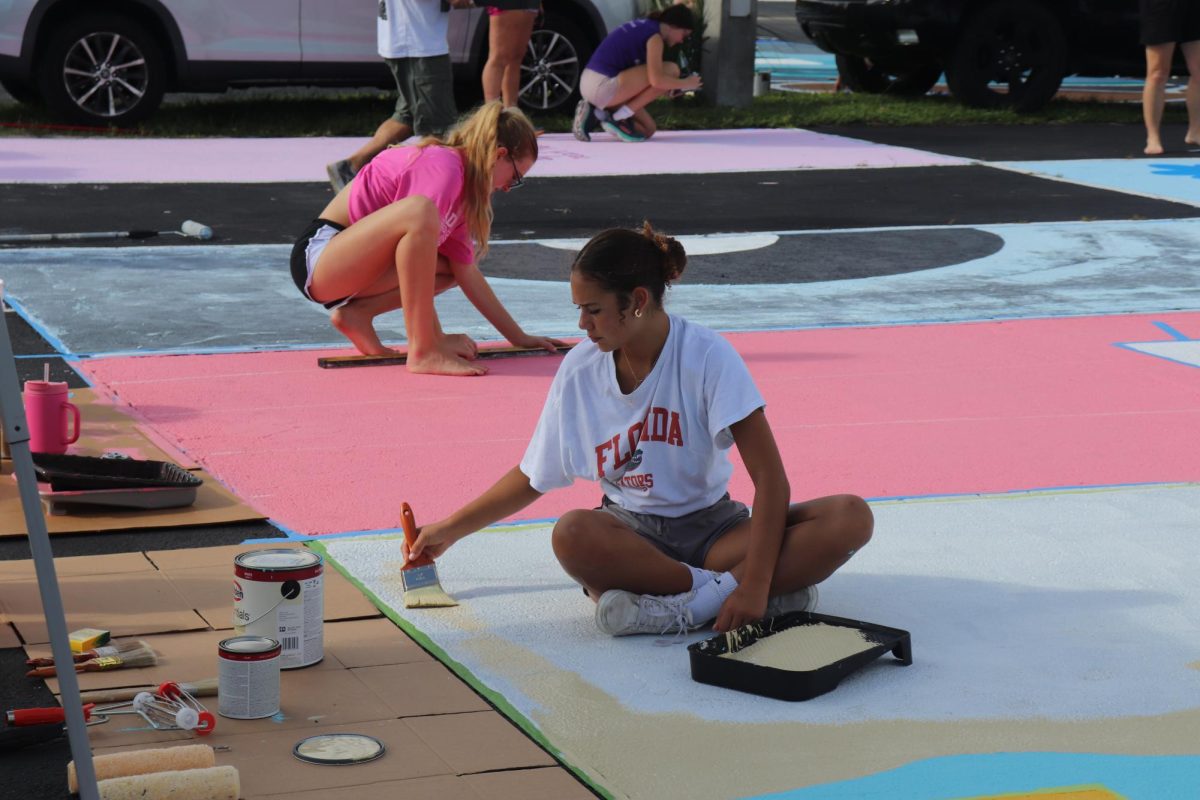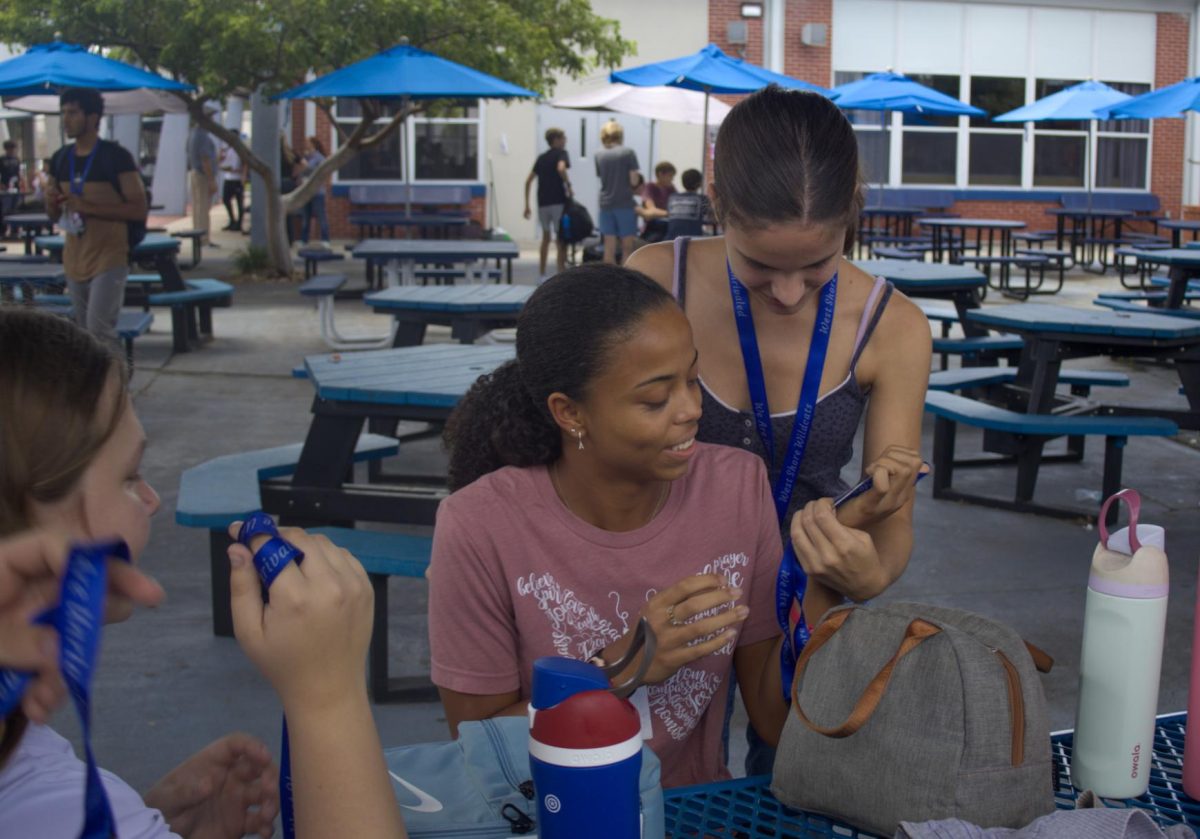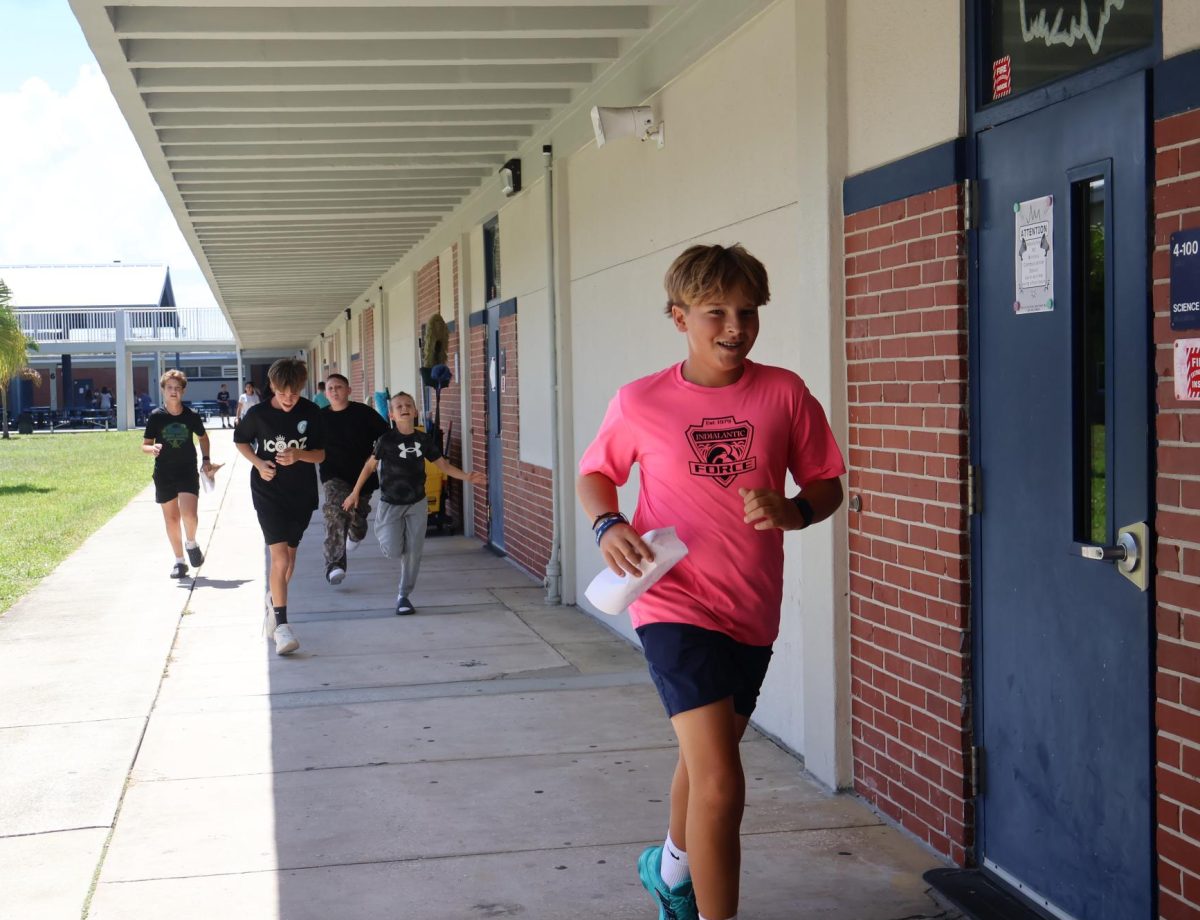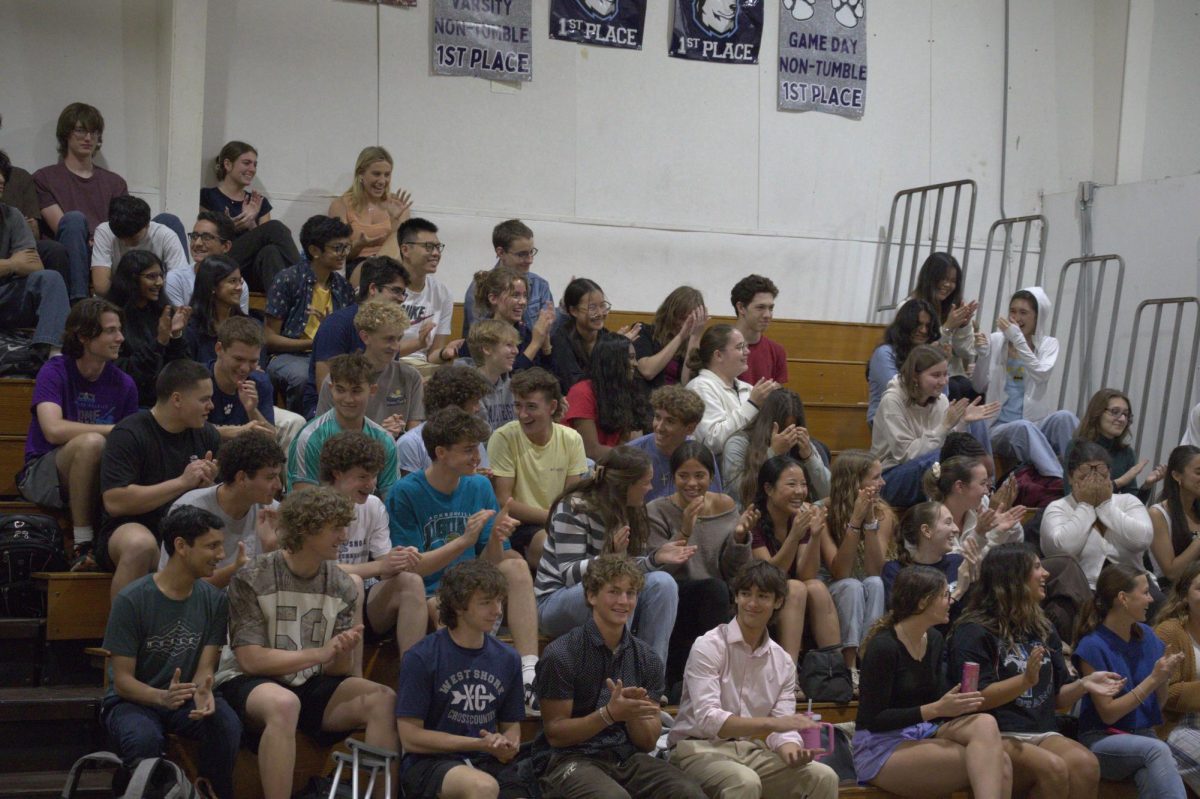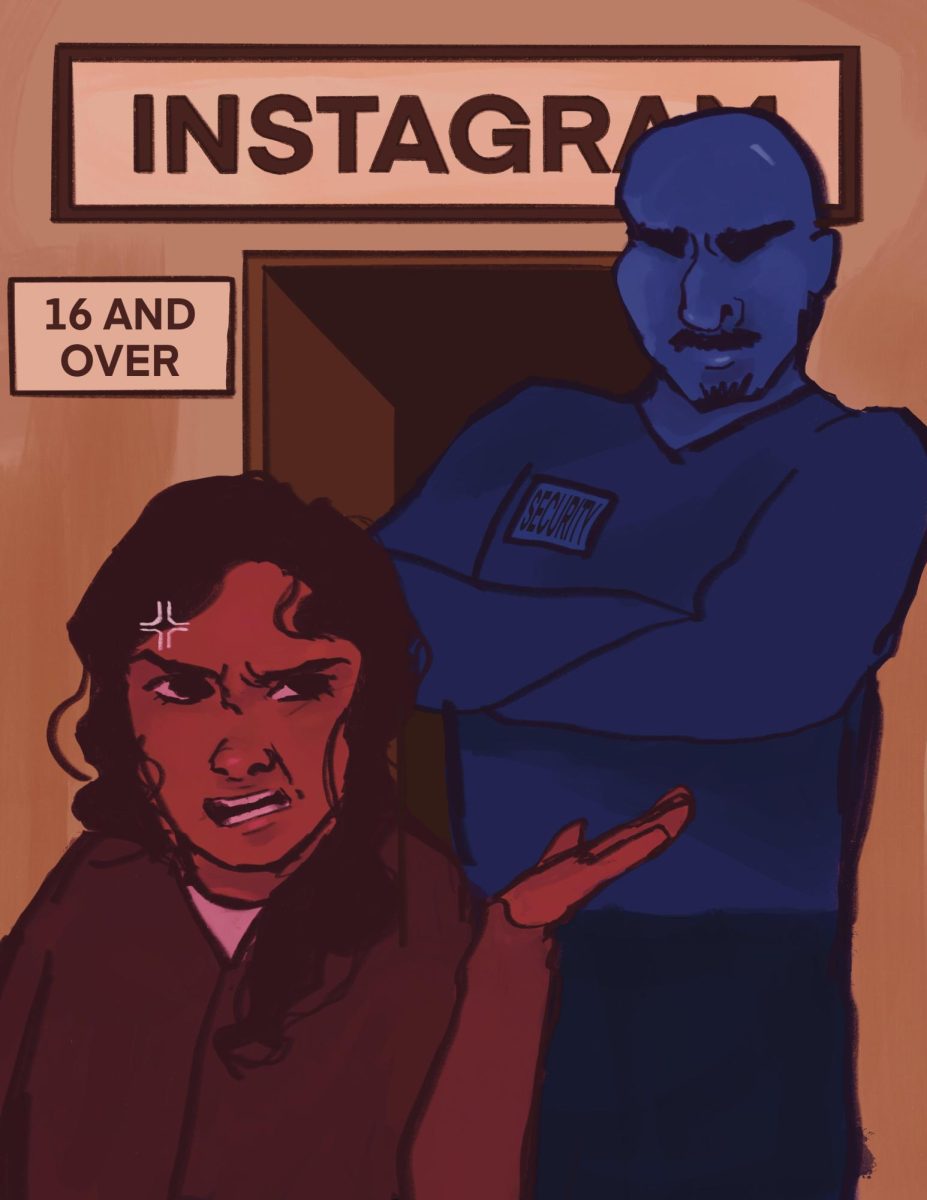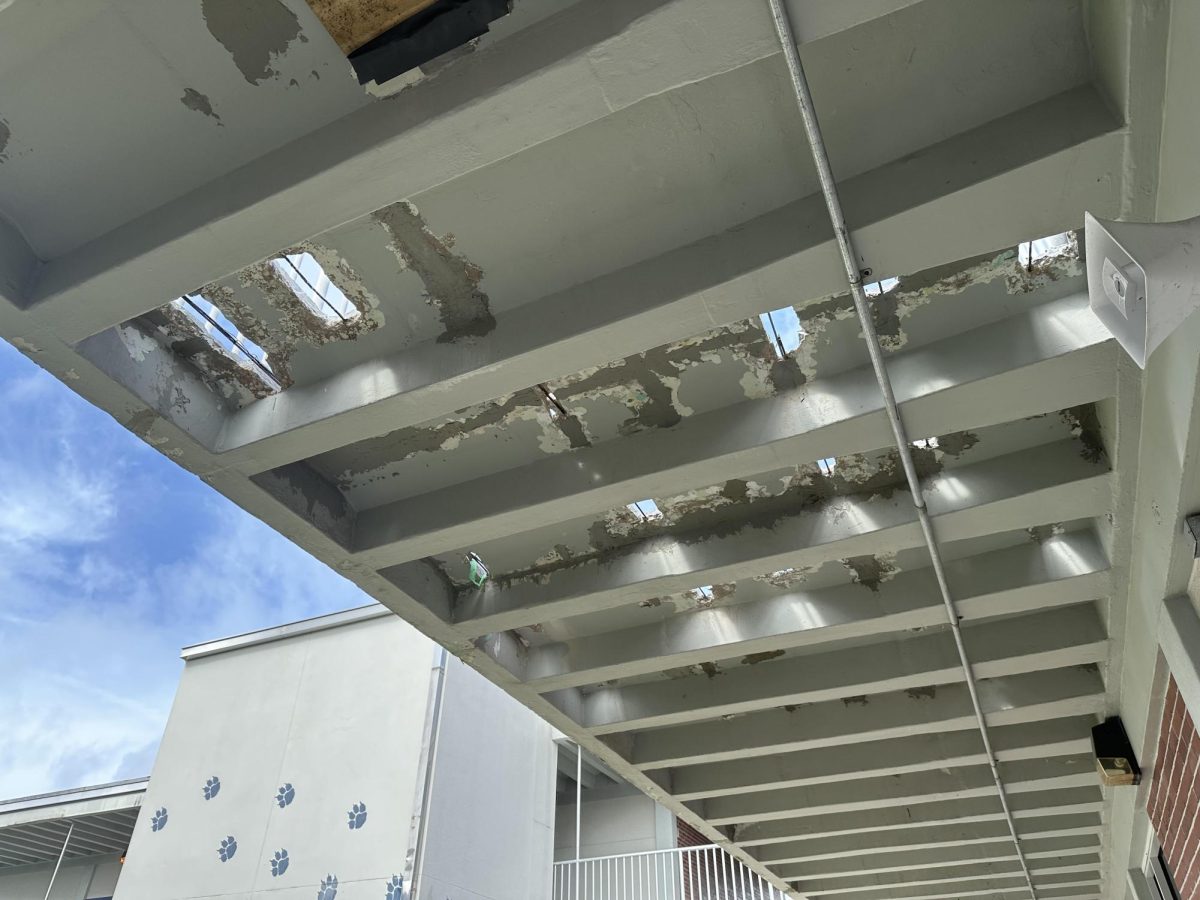Since the project of repairing the concrete spalling throughout the school’s campus began on Dec. 26, the contractor has discovered unexpected issues concerning the structural integrity of the building. According to Assistant Principal Catherine Halbuer, when the construction workers first power washed away the paint and chipped away the concrete in some areas, they found that some of the buildings — which were built in 1957 — have more severe damage than initially expected. The spalling is a result of surface or subsurface fatigue caused by age and weather.
“When [the district] first put together a bid or a scope of work, an engineer walked this campus and came up with a [plan] of what he thought the work would entail,” Halbuer said. “[However, when the workers started, they found out] there were more areas of damaged spalling. For example, the area by guidance has 54 spots that have to get repaired. That wasn’t near what they were anticipating. [In addition, in the area near the front office], the engineer predicted there would be two spots, [but when they chipped into the concrete], there were 11 spots identified.”
Principal Rick Fleming called the damage “sporadic.”
“When you’re doing a project where you’re digging into concrete, there’s a lot of uncertainty and ambiguity in figuring out exactly the extent of the damage and how much needs to be done,” Fleming said.
With safety as a priority, Fleming hopes to complete repair work on second-floor walkways and areas that experience high traffic during school hours first.
“The areas I’ve really been focusing on are the areas with a lot of weight on the upstairs, because I’ve been worried about it collapsing,” he said. “If you put 100 students up there walking by and the [strength] of the weight bearing overhang is not sufficient enough to hold them, it could potentially collapse. And that has been my argument [with the school district] for years.”
Moreover, with the recent discoveries, administration plans tap the project’s contingency fund, which is an additional amount of money built into the initial price estimate of a project in the case of unexpected cost overruns. There is currently $41,437.88 in the project’s contingency, and according to Halbuer, it may increase as the contractor reaches out to the district for authorization on the extra repairs.
Also, as a result of the work on campus, some classess have had to be temporarily relocated. Also, students and staff have had to maneuver around construction zones in order to get to some classrooms.“I think this staff needs to be commended for their willingness to deal with the relocation because it’s a disruption to their classroom,” Halbuer said. “They are super-duper troopers, and with the kids learning where they have to go, everybody has just been wonderful. However, there have been some exceptions and I ask that those students avoid the areas with yellow tape.”
The current plan for the construction is to relocate classes and complete spalling repairs on a section of three to four classrooms at a time before moving to the next section. However, it’s uncertain how long each section’s repairs are expected to take.
“As [the workers] get in and see the damage, that will then dictate the timelines, either shortening or lengthening them, depending on the extent of the damage,” Fleming said.
Halbuer said that in an effort to minimize disruptions to students, the project and worker’s schedule have been adjusted. The construction workers are expected to work 10-hour workdays Wednesdays through Saturdays.
“Now, [the workers] won’t work on Monday and Tuesday,” Halbuer said. “We did that so that we could have a quiet day on campus and teachers could have their rooms for testing. [It is important to us to] give each subject their testing day. I don’t think a kid would want to take a test with noise going around campus.”
Fleming emphasized that the construction team will try to keep the noise level down during school hours by running hoses and equipment outside the building. All of the spalling in Buildings 2, 3 and 4 are expected to be repaired by Spring Break which begins March 25.
In addition, the repairs on area near the front office and the upstairs walkway between Buildings 2, 3 and 4 on the west end of the campus are scheduled to take place during Spring Break.
“I’m hoping by Spring Break or so, [the workers] will be done, but it could go on and linger,” Fleming said. “I just don’t want to impact testing at all for the students. Either way, once we hit AP testing and FAST PM3 testing, they won’t do anything during those windows.”
When the repairs are completed, the workers will level the concrete, and coat the walkways and ceilings with non skid surface paint. According to Halbuer, final completion for the project is scheduled for June 29.
While inconvenient, the project simply could not wait any longer, according to Fleming.
“I’ve been principal here for 18 years, but for the past 12 to 15 years, I have been arguing with the district on how dire [our situation is],” he said. “[When they finally listened and sent a structural engineer], they recognized it. Along with West Shore, 16 other schools in the district also need spalling repair work because many of our schools were built a long time ago. Then, we were faced with the challenge of ‘should we do it now or do we do it over the summer?’ However, I knew that if we agreed to do it over the summer, we’d go from number one of 16 to number 16 of 16. And I am not going to do that. So I would rather deal with a little disruption on campus and a little bit of inconvenience in relocating classrooms than have to wait and then possibly not even get it done this summer.”
By Kristen Ye

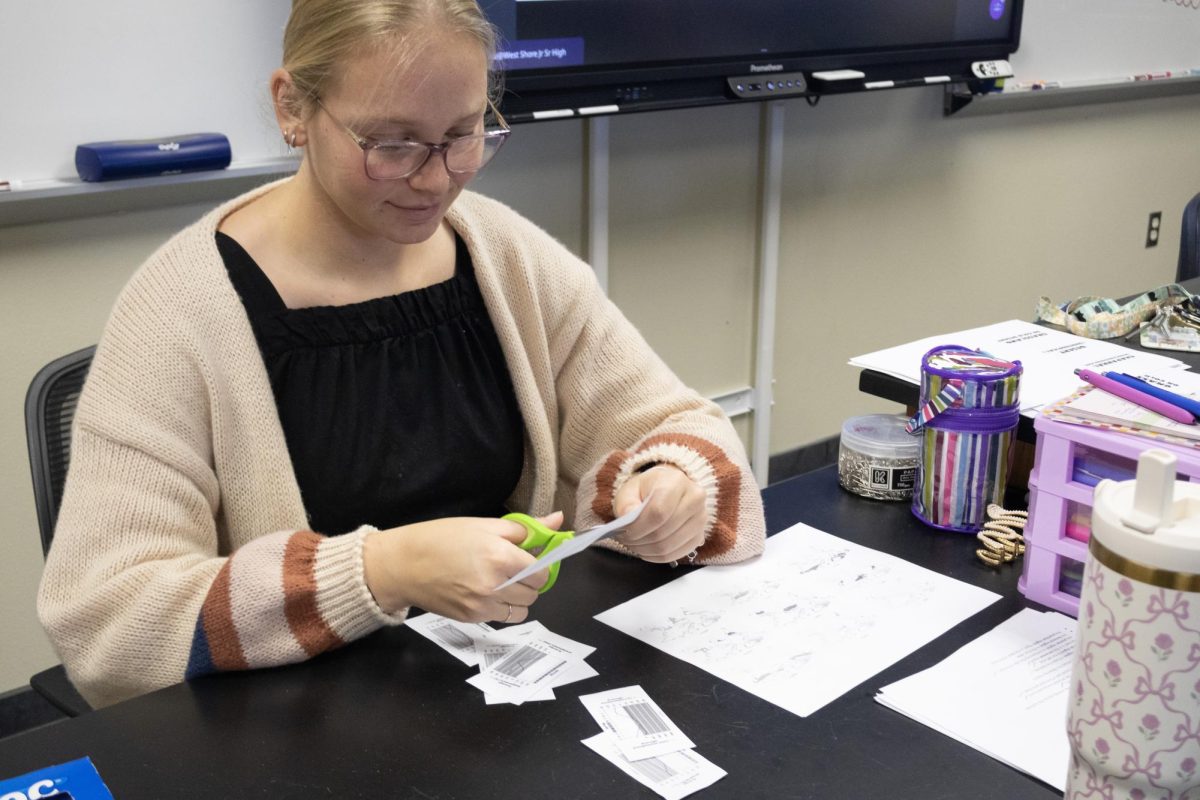
![Sophomore Isabelle Gaudry walks through the metal detector, monitored by School Resource Officer Valerie Butler, on Aug. 13. “I think [the students have] been adjusting really well," Butler said. "We've had no issues, no snafus. Everything's been running smoothly, and we've been getting kids to class on time.”](https://westshoreroar.com/wp-content/uploads/2025/08/IMG_9979-1200x800.jpg)












